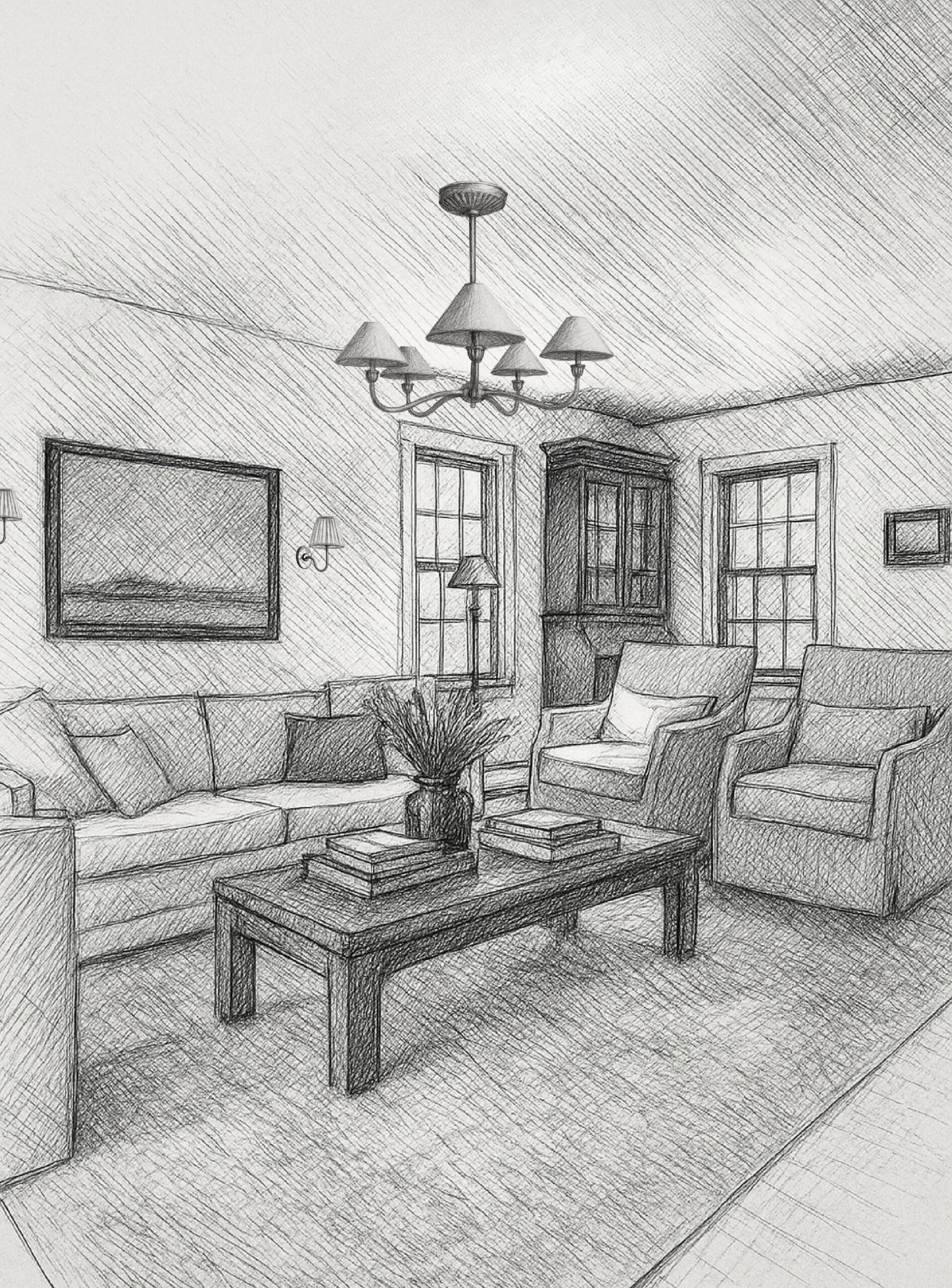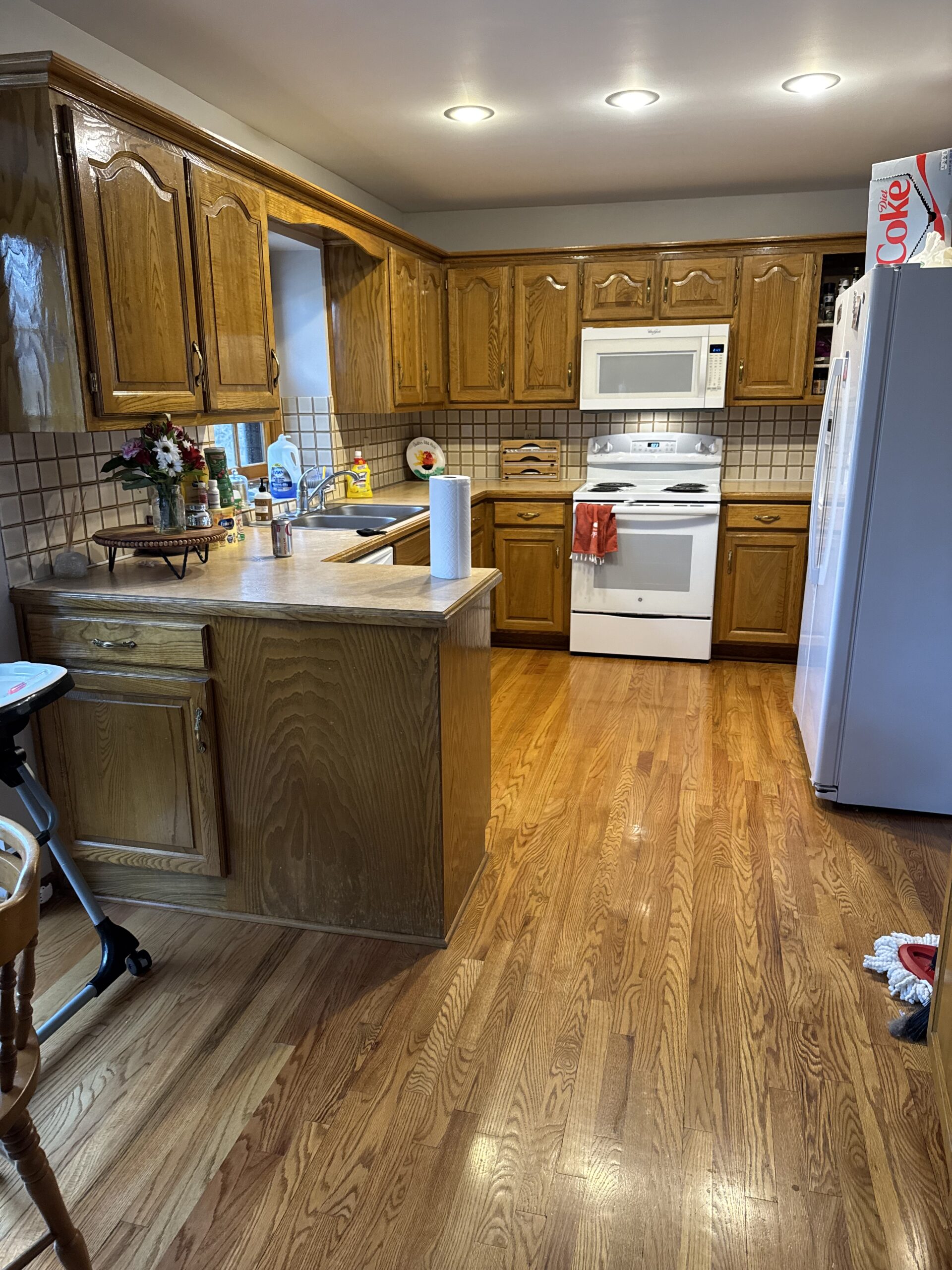It’s no surprise that light plays a powerful role in the design of a room. It dictates the colors we choose, the mood we feel, and the activities we do. While light is perhaps one of the most important elements in interior design, it’s also one of the most underplanned and underutilized aspects in homes today. This needs to change, and the first step in remedying the situation is to educate homeowners on what a proper lighting scheme looks like by providing a simple formula to achieve it. Today, I’ll be discussing the three sources (and levels) of light that every room should have.

This post contains affiliate links.
3 Sources Of Light Every Room Should Have
While many people think of light as a way to illuminate a room, and nothing more, I challenge you to think of light as a way to enhance a room’s function and feeling through a lighting scheme. It is widely believed that a room with a well-executed lighting scheme includes 3 sources of light: ambient, accent, and task lights.
AMBIENT LIGHTS
Ambient lights are your general overhead lights that illuminate the entire room. This may be recessed/can lights, flush mounts, or chandeliers. While ambient lights should, of course, be stylish, their primary purpose is function.
→ TIP: The best light bulb color temperature for ambient lights is 3,000k.
ACCENT LIGHTS
Accent lights are used to either highlight a specific object or to provide a soft glow. This source of light is more for decorative or atmospheric purposes. For example, a wall sconce with a low-wattage bulb provides only a hint of light, but it warms the room in a way that ambient lights cannot. On the other hand, a picture light hung above artwork is utilized to highlight the art. Accent lights can spotlight objects to create a focal point within a room.
→ TIP: The best light bulb color temperature for accent lights is 2,700k.
TASK LIGHTS
Task lights are used to provide light for a specific task, such as reading, cooking, or writing. This light source is also for functional use, but can be used decoratively to illuminate a dark corner. Table lamps, floor lamps, and under-cabinet lighting are all examples of task lights.
→ TIP: The best light bulb color temperature for task lights is 2,700k.
Ambient, Accent, & Task Lights I Love
SCROLL RIGHT TO VIEW THE FULL SHOPPING LIST →
3 Levels Of Light
While the formula above is tried and true, Brandon Schubert, a lighting design expert in London, provides a new perspective that can be used in tandem with the 3 “sources” of light rule. He suggests incorporating three levels of light: overhead, eye level, and below eye level. This ensures even distribution of light.
CEILING / OVERHEAD LIGHTS
Generally, ambient lights fulfill the role of overhead lighting. However, accent and task lights can also be positioned high on the wall, above your head.
EYE LEVEL LIGHTS
Much of your accent lighting can be positioned at eye level. Wall sconces, candle sconces, and floor lamps are excellent ways to add eye-level light.
BELOW EYE LEVEL LIGHTS
Task lights, such as table lamps, are the easiest way to incorporate below eye-level lights in a room.
Most Homes Are Missing At Least One Source of Light
In my experience, most newer homes have ample overhead light, if not too much honestly. An excess of recessed lights in new build homes has unfortunately replaced chandeliers and beautiful flush mounts. Old homes, on the other hand, often have the opposite problem with little to no overhead lights.
Table lamps are the second most utilized source of light in both new and old homes. It’s the easiest to add to a space without the need for electrical work.
But very few homes have any accent lights at all. Unless planned for during a renovation, wall sconces, picture lights, and spot lights are not an easy addition without the help of an electrician running new wire. (Although I’m seeing more elevated plug-in wall sconces by the day.) Eye-level accent lights are the most common missing light source in homes today.
So my challenge for you is to walk through your home and take note of all the sources of light. Does each room have at least one ambient, accent, and task light? Are the lights above, at, and below eye level? You’ll find that once you execute a lighting scheme following these guidelines, the room will carry an entirely new feeling from morning to night.
Before you take off, I’d like to leave you with this quote from Brandon that might just alter your perspective on lighting completely.
Light objects and surfaces, not space.
– Brandon Schubert
DO YOU WANT
The Inside Scoop
Where behind the scenes, exclusive advice, and candid conversations are sent straight to your inbox every week.


